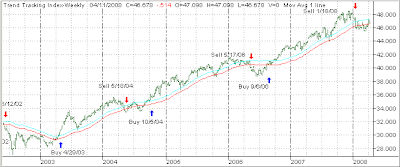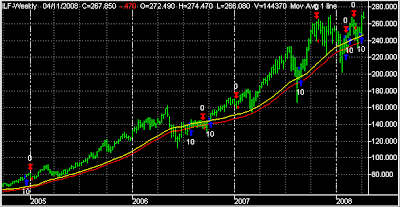 I received several e-mails from readers who are “angry” with the market direction or at least their interpretation of it. When the domestic Trend Tracking Index (TTI) moved closer to the lower end of the neutral zone a few weeks ago, some investors apparently ended up being a little premature as they initiated substantial short positions. Some committed up to 30% of portfolio value.
I received several e-mails from readers who are “angry” with the market direction or at least their interpretation of it. When the domestic Trend Tracking Index (TTI) moved closer to the lower end of the neutral zone a few weeks ago, some investors apparently ended up being a little premature as they initiated substantial short positions. Some committed up to 30% of portfolio value.
As is often the case, when trends can’t be clearly defined, the markets can move sideways and/or back to the higher end of the neutral range causing some whip-saw losses. As you know from my updates, I have repeatedly cautioned not to make to early of a commitment either on the long or the short side.
It is important to accept the fact that the market is never wrong. You can be wrong or you can be right, but still lose money because your commitment happened to be too early. If your timing is off, just be sure to limit your losses via my recommended sell stops.
You have to be big enough (and forget about your ego) to accept the fact that you will be wrong at one time or another. The only way I know of how to deal with being wrong is to cut your losses short and forget about them. Prepare yourself for the next opportunity as well as the next trend, which is sure to come along; we just don’t know yet when.
Thanks to Michael Covel, whose book “The Turtle Trader” I reviewed a few weeks ago, I found a link on Michael’s website to a song created by Ed Seykota, a long time super-successful trend follower, whose blue grass band perfectly interprets and offers solutions to the whip-saw problem.
It’s a well done music video and you can watch it by visiting this link.
Enjoy!







